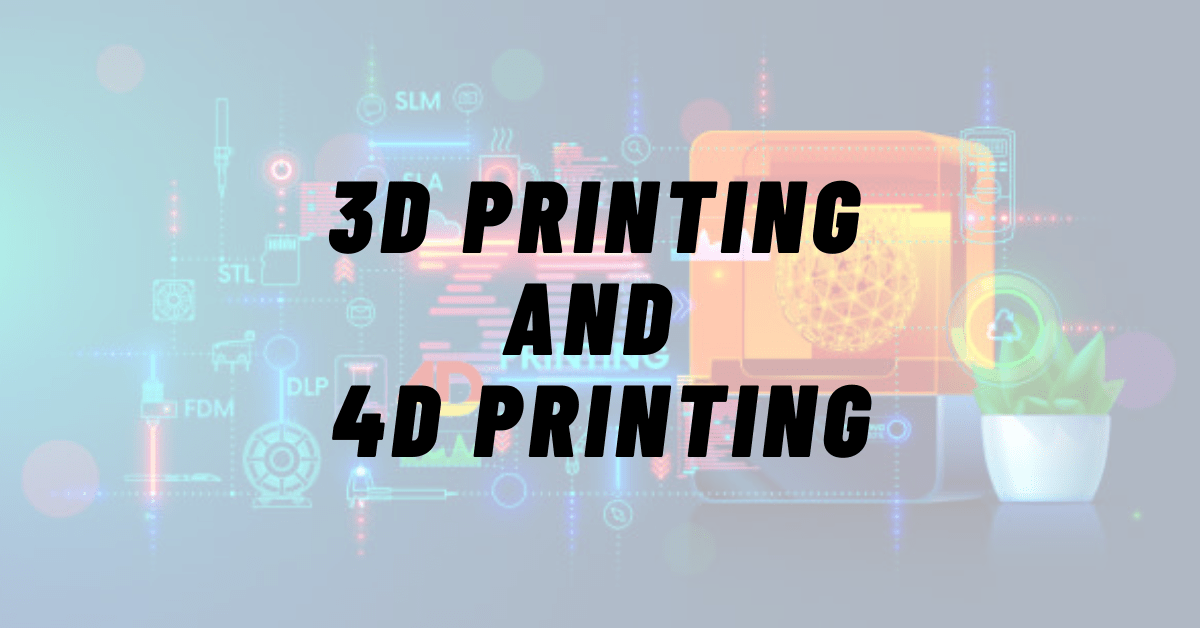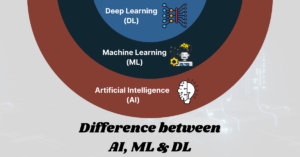4D The technique of 4D printing is the same as 3D printing: It uses the same 3D printers and computer to build a 3D structure by dropping material in consecutive layers. How do 3D printing and 4D printing differ from one another? Let’s explore.
Three-dimensional printing, or additive manufacturing, uses computer-aided design to convert a digital blueprint into a physical object, i.e., computer-aided design (CAD). However, the additive manufacturing industry continuously discovers new uses for materials, which is why 3D printers and other technologies are emerging. MIT researchers have developed the idea of four-dimensional (4D) printing.
What is 3D printing?
3D printing or additive manufacturing makes three-dimensional solid objects from a digital file. With the help of additive processes, we can create incredible 3D-printed objects. An additive process creates an object by laying down successive layers of material until the product is complete. 3D printing is the inverse of subtractive manufacturing, which involves cutting or hollowing out a piece of metal or plastic with a milling machine. It allows you to create complicated shapes with less material than traditional manufacturing methods. 3D printing involves three basic steps:
- Modeling
- Printing
- Finishing
Many industries are currently adopting 3D printing technologies. 3D printing is a simple technology with various applications. From the basic manufacturing process to its current support, users can use the convergence technologies in food packaging, jewelry and equipment, and high-tech industries such as aerospace, architecture, automotive, education, medical, and military.
What is 4D printing?
4D printing introduces a new dimension. It is a technique through which a 3D-printed item can transform shape over time. It is necessary to incorporate unique materials and customized designs into the software to cause the 3D print to change shape when activated by certain stimuli, such as heat, water, or light.
This programmable component, also known as a hydrogel or shape memory polymer, can change its physical form or thermomechanical characteristics in a programmed manner in response to human input or autonomous sensing. Hydrogels can absorb a large volume of water and can be designed to shrink or expand in response to changes in their surroundings. When the stimulus is applied, shape memory polymers can recover their original shape from a distorted one.
While 3D printing includes instructions for sequentially printing layers of material, 4D printing adds a precise geometric code to the process based on the angles and dimensions of the intended shape. It provides form memory for instructions on how to move or adapt under specific environmental situations.
Difference between 3D printing and 4D printing
Manufacturing procedures
The 3D methods create items with permanent shapes that will remain unchanged after manufacturing. Unlike traditional manufacturing methods such as CNC machining, casting, and plastic injection, 3D printing uses innovative production techniques such as FDM (Fused Deposition Modeling) and SLA (Stereolithography).
Even though 4D printing uses 3D printing processes, the things generated with excellent materials and customized designs can change structurally. However, external stimuli such as water, heat, electricity, or light are required to initiate the deformation phase.
Material
Depending on the printing substance, items made using a 3D printer can be stiff or flexible. Even if you use an elastic material, it will restore its original shape when the pressure is released. For example, when you pull a rubber band, its shape changes; when you release the band, it returns to its original shape.
4D printing, on the other hand, presents a new concept. When stimulated, the structure can undergo a complete transformation. The smart material in 4D printing transforms itself in response to stimuli. The rigid materials can be entirely formed of expandable materials or connected with disposable parts in an intelligent structure of two sorts. Expendable components change shape after exposure to stimuli, resulting in a new shape. Hydrogel can absorb a large amount of water and expand, and polymeric materials that can return to their previous shape after being changed are examples of smart materials.
Size
The size of an object produced with the help of a 3D printer depends on the size of the printer. However, the size of an item can surpass the printer’s dimensional limitations in 4D printing. The capacity to perform post-production transformations provides a considerable advantage in terms of product size. Consider the differences between folded and flat cardboard. A 3D printer must create a folded cardboard, but a 4D printer may produce a flat item that can transform into a folded cardboard.
Conclusion
In Conclusion, both have advantages and drawbacks. 3D printing is highly flexible and practical in terms of design and manufacturing. 4D printing has the potential to bring value to a variety of applications. It may never be as popular as traditional 3D printing, but the results will be fascinating following its progress and influence on intelligent materials.
[Shahbaz Kamil writes this article during Train the Learner’s Four weeks Training Program as an Article Writer]




